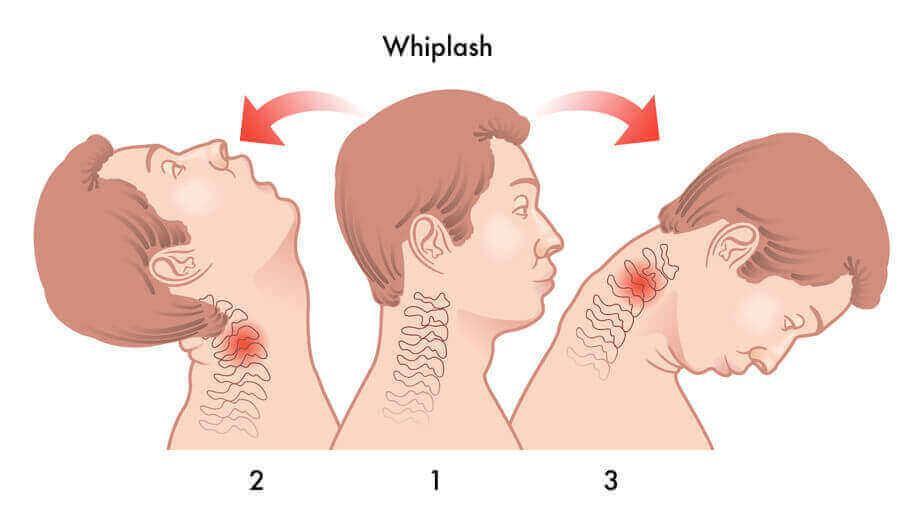Your Cart is Empty

A chiropractic adjustment is a non-invasive technique to ease any pain related to your musculoskeletal health. Chiropractors practice integrative medicine meaning they not only adjust your spine, but can recommend exercises to rehabilitate your musculoskeletal system, and lifestyle changes to keep you pain-free.
But before we discuss the nitty gritty of chiropractic care, let’s address the question that piques everyone’s interest - what is that popping sound?
While it may sound like your bones popping into place, that’s actually not the case. The sound you hear is from the small pockets of air within the fluid of your joints. During the adjustment, the air bubbles pop which creates the cracking sound.

Photo from The Foot and Ankle Online Journal
Now that’s settled, let’s talk about the benefits of chiropractic.
A chiropractic adjustment is a form of spinal manipulation where chiropractors use their hands and other instruments to put force on a spinal joint. The goal of the adjustment is to improve spinal motion and relieve pain or any impaired bodily functions.

The spine is the switchboard of the nervous system. It is responsible for sending out messages from the brain to the body so when it goes awry, your body malfunctions. When your spine is misaligned, the whole system is out of balance.
The warning signs that you NEED a chiropractic adjustment are the following:
A chiropractic adjustment can be good for a lot of things. It can not only be a preventive and supportive treatment, but also a non-invasive procedure that’s beneficial for the following conditions:
Blood Pressure
It might not seem directly proportional, but a chiropractic adjustment can help decrease your blood pressure. Chiropractic has been shown to decrease blood pressure equivalent to taking 2 medications. People with a misaligned C1 vertebrae, otherwise called the Atlas Vertebra, can benefit from a spine adjustment.
Anti-hypertensive medication needs to be taken regularly. Skipping a dose or two can shoot up your blood pressure which can be inconvenient since you’d have to deal with the side effects all over again. For this reason, some hypertensive patients choose chiropractic.
Scoliosis
Scoliosis is an abnormal curve in the spine. It’s usually diagnosed during childhood or adolescence. Since it is a progressive condition, it can only get worse over time.

Photo from Spine Universe
Scoliosis can’t be cured or completely reversed, but its symptoms can be managed by chiropractic. Other supportive methods to consider are bracing, physical therapy, and rehabilitation. Over time, chiropractic can relieve pain, nerve pressure, and improve posture.
Sciatica
Sciatica is a pinching pain that can be felt along the sciatic nerve. The sciatic nerve starts from the base of the spine and extends to the back of each foot.

Photo from Colorado Pain Care
Sciatica can be caused when the nerve on the lower back is inflamed or pinched, often caused by a herniated disc. A chiropractic adjustment, in conjunction with an anti-inflammatory diet can reduce the pressure on the nerves and relieve pain.
Brain Health
Any form of intracranial pressure leads to brain dysfunction. Adjustments made to the cervical spine have been reported to relieve brain fog. Generally, adjustments can increase activity in the brain’s prefrontal cortex which is the part of the brain that’s responsible for attention & focus, impulse control, as well as coordinating complex behaviors.
Back Pain
Your back is where the spine is so any problems within that area can most likely be cured by a chiropractic adjustment. If you’re experiencing chronic pain that has not responded to any previous treatments, the problem can lie in your musculoskeletal system.
If you work a desk job, slouched for 8 hours a day, or when your lifestyle demands a constant tune-up, going to a chiropractor might greatly improve your back.
Neck Pain & Whiplash

Photo from Spine Center and Orthopedic Rehabilitation of Englewood, PC
Whiplash is a form of neck injury that can be caused by car or sports injuries. Symptoms for whiplash include stiffness, neck pain, numbness of the arm, headaches at the base of the skull, fatigue, dizziness, and it can even range to blurred vision, tinnitus, etc.
Migraines & Headaches
Migraines and headaches can be caused by trouble in the head or neck region. Your posture, lack of food, eye strain, or literally anything can trigger these.
Bad Posture
If you have bad posture you want to correct, chiropractic adjustment can greatly improve it. A chiropractor can correct slouching and postural imbalance. A chiropractor also works with weak or injured muscles which can all contribute to your posture. With continuous adjustments, you can expect improvement in your posture.
Shoulder Pain
Misalignment in the shoulders can cause you to wince in pain when you’re reaching overhead or behind your back. If shoulder pain persists, you might want to consider getting checked.
Critical injuries should be taken care of in a hospital. If you’ve experienced a fall or a vehicular accident, head straight to the ER. Chiropractic care is advised to injuries that persist and does not in any way substitute emergency care.
Anyone with a fracture, broken bones, or osteoporosis will not benefit from a chiropractic adjustment.
Before the adjustment, your chiropractor will ask you for your detailed history, followed by a few tests to check your range of motion and response to pain. A basic test is also done to check your spine’s alignment.
Usually, your chiropractor will know what type of adjustment you’ll be needing. In more delicate circumstances, an xray or MRI might be needed for a more accurate evaluation.
After the procedure, you might feel some pain and soreness in the treated area. This is normal, especially for a first timer. The experience is often likened to working out for the first time. Your body has been realigned and will need some time to adjust to the changes.
After your adjustment, a form of detox takes place. A misalignment is a form of spinal subluxation and when these occur, toxins build up in the joint capsule and are released during your adjustment.
Apart from muscle pain, you might also feel some brain fog, fatigue, and headaches.
Hot and cold therapy are great supportive methods used in conjunction with chiropractic care to relieve aches and pains in the body. Cold therapy can be used for aching muscles while hot therapy can be used for stiff muscles.You can also alternate both ice and heat therapy in order to get the best results.
As daunting as the idea of going to a chiropractor sounds, it is a non-invasive procedure that will benefit the function of your whole body. There are many approaches to healing and pain relief, so you can choose which ones are right for you. For your hot and cold therapy needs before and after your adjustment, choose IceWraps.com.
 |
 |
|
ICEWRAPS 7”x28” Neck and Shoulder Reusable Ice Pack with Soft Fabric Cover
|
ICEWRAPS 12”x21” Reusable Ice Pack with Soft Fabric Cover
|
IceWraps.com also offers customized gel packs for clinics and private practices. If you own a chiropractic care clinic, you can click here or email us atsupport@icewraps.com to learn more.
Comments will be approved before showing up.